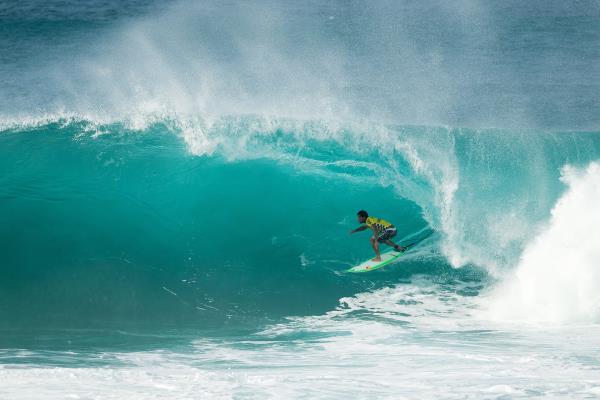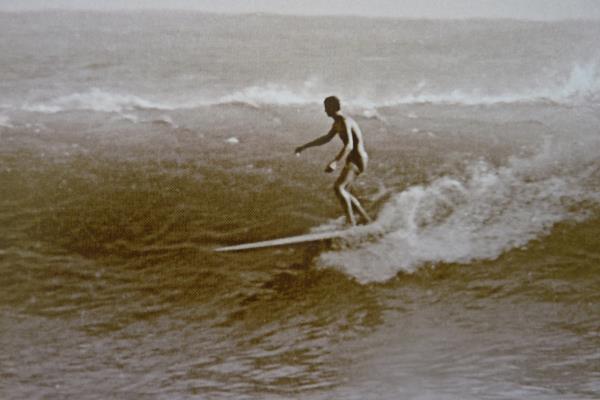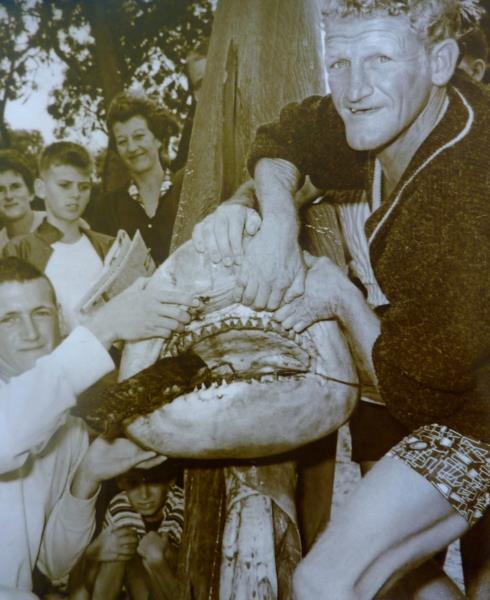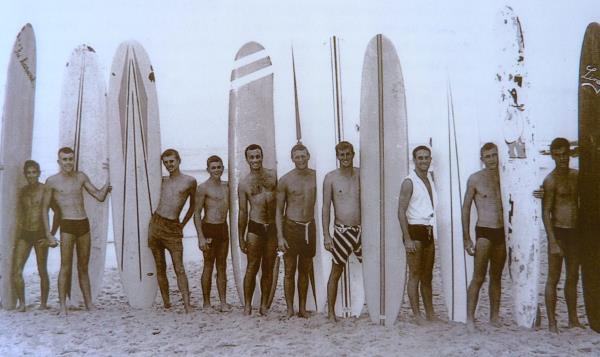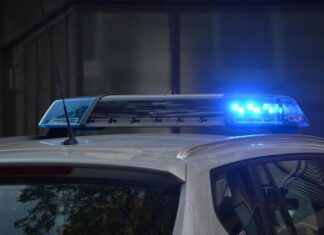By PHIL JARRATT
THE Noosa National Surfing Reserve book and DVD, A Cup Of Tea With God, is nearing completion and is shaping up as a beautiful souvenir of our surfing heritage.
Here is a taste:
The generation of ex-servicemen who started bringing their families to Noosa in the 1950s included many keen body surfers and surf ski riders, but they mainly focused on the beach breaks of Main Beach, paying scant attention to the perfect waves rolling in along the point breaks every time an east swell combined with a south-east wind.
It wasn’t until a Maryborough-based lifesaver named Hayden Kenny (later to become surfing’s first ironman champion in 1966) saw balsawood Malibu surfboards in action when an American lifeguard team toured Australia in 1956 that the potential of the points was realised.
Kenny, then 20, ordered a replica of the American Malibu from Sydney surfboard builder Gordon Woods – a 10-feet six-inch hollow wood veneer “okinui” weighing more than 30 pounds – and brought it down from the family farm to Noosa to try it out in late 1957. He told surf historian Stuart Scott: “I’d been to Noosa for a surf carnival, so I knew what was there, the layout of the land and the points, and how the wind affected the surf conditions, so I went there with the board. I remember that first time, walking over the sand dunes right beside the surf club, and there was First Point just going off. After that I kept going back. You only needed a two to three-feet peeling wave, and I had it absolutely to myself from 1957 to 1961.”
Hayden concedes that “there might have been others sneaking onto the points at different times” during those years, and surf club history certainly seems to point that way. Max Krogh from Gympie joined the Noosa club in the early 1950s and regularly rode a 16-foot hollow paddle board at First Point, and on small days he would paddle to the outer bays in search of waves. In 1958 Merv Cummings, also from Gympie, started leaving a huge balsa board, made by a Brisbane boatbuilder, under the clubhouse and riding it on the points. Merv later bought a cast-off Gordon Woods board from Hayden Kenny, but when he left it on the beach overnight, a storm blew it up and over the sand dune and across Hastings Street into Thatcher’s Flats. Boards were made of sterner stuff in those days, and it survived with only a few ding repairs needed.
By 1960 there was a small crew of Noosa surf club members who surfed the points regularly during holiday periods and summer weekends. New member John Fancourt from Brisbane was one of them, and he was with other regulars Merv Cummings, Roy Cronk and Ken Window surfing First Point on Sunday 17 December, 1961, with a young Brisbane dental student named John Graydon Andrews. The following morning dawned cool and overcast, and while Fancourt and the other lifesavers enjoyed a sleep-in at the club’s bunkhouse, Andrews paddled his Malibu board out at First Point and rode good quality waves alone. He was pushing his board through the shallows on his way in for breakfast at about 6.30am when a 12-foot whaler shark struck, tearing his left leg off at the knee, then ripping into his left arm as the young surfer tried to fight it off.
Fishermen Rawdon Payne and Keith Bain heard Andrews’ screams and pulled him from the surf where the lifesavers, now fully awake, applied tourniquets to try to stop the bleeding while the young surfer slipped in and out of consciousness. When an ambulance finally arrived from Cooroy, Andrews was rushed to Nambour Hospital, and later transferred to Royal Brisbane, where his condition fluctuated before he died on Christmas Eve. The Noosa lifesavers, several of whom had already had close encounters with it, caught the killer shark and exacted revenge on it, and the fatality, along with another later in the season, eventually resulted in the introduction of shark nets. But Noosa’s reputation for safe surfing had taken a major hit.
The Noosa National Surfing Reserve is offering families and individuals the opportunity to become Official Supporters of this worthwhile initiative and receive recognition in a special Supporters Page within the book, plus on the NNSR website and Facebook page. You can become a NNSR Supporter for just $100 and receive a copy of the book and DVD you helped create, plus a whole range of supporter benefits. Email info@noosanationalsurfingreseverve.com.au for details.
Down to the wire on the world tour
By the time you read this, the 2014 ASP World Championship may well have been decided in huge waves at Pipeline, but as I write I’m still getting over the sensational display of power surfing that went down in the final qualifying event of the year, the Vans World Cup at Sunset Beach.
The final day of this event had everything – smacking Sunset at double and triple overhead plus half a dozen surfers with their careers on the line. Fortunately, Coolum’s Julian Wilson had already requalified in the previous event, but others, like Matt Wilkinson and Dusty Payne, put everything on the line in dangerous conditions. Radical goofy footer Wilko was the most inspiring surfer in the water at Sunset, but it was former tour reject Dusty Payne who seemed to draw the best waves to him whenever he surfed.
Payne, from Maui, looked a shoe-in for the Cup, the Triple Crown and requalification until Tahiti’s Michel Bourez made a sensational late charge to combo the field in the four-man final. I was on the edge of my seat throughout. Great stuff, ASP. Sorry, World Surf League.
I’ll report on the World Longboard Championships in China next week.
Book Signing
I’ll be signing books and chatting to punters at Annie’s Books, Peregian Beach, on Saturday from 10am to noon. If you’re looking for a special Christmas gift for that surfer in your house (or maybe a Bali tragic) please stop by and support the one local bookseller who really gets behind local authors.

